Imperia were relatively late starters in the Belgian motor industry - they did not begin production until 1906; six years after Minerva, eight years after Metallurgique and nine years after Germain. Designed by the German Paul Henze, the Piedboeuf-Imperia range consisted of an 18 hp 3-liter, a 24/30 hp 4.9-liter and a 50/60 hp of 9.9 liters. Henze drove a Piedboeuf-Imperia in the 1907 Kaiserpreis, dropping out on the third lap. The 'Piedboeuf' part of the name was dropped the same year, when the company moved into a factory at Nessonvaux that had formerly been used for the manufacture of the Pieper voiturette.
By 1908, the marque was available on the British market. At Olympia that year, the London agents showed the 18 hp, marketed in England as the 16/20, noting that its engine had a crankshaft running on ball-bearings. Perhaps, because of this, the Imperia had a minor competition record, with class successes at Chateau-Thierry and Mont Ventoux hill-climbs, and outright victory in the Circuit of Ostende, an obscure and badly organised light-car race. There were also the 'obligatory' appearances at Brooklands.
The New Light Imperia
1909 saw the introduction of a new light Imperia, the 12 hp, which had its four cylinders cast en bloc; as on the 16/20, the gearbox was in unit with the engine. It sold on the British market for £270 in chassis form. In 1910, came a merger with another Liege firm, Springuel; for a short time, Springuel-Imperias were marketed, with the 16/20 hp engine and a 28 hp engine also used on Imperias from 1910 on but, by 1912, they had become simply 'Imperia'. It seems strang that this occured, as history records Jules Spnnguel as being manager of the combine at the time.
Francisco Abadal - The Spanish Super Salesman
Around this time emerged the Spanish super-salesman Francisco Abadal, who had introduced His Most Catholic Majesty King Alfonso XIII to the Hispano-Suiza, and now intended to produce a sporting car of equal quality to the Alfonso Hispano. It was, perhaps, somewhat more than coincidence that the Abadal had identical cylinder dimensions to the Hispano (there was also a 40/45 hp six-cylinder version) and as Abadal was also the Spanish agent for Imperia, it was natural that the new cars were soon being sold in Belgium as Imperia-Abadals, although pre-World War 1 production of this marque within a marque seems to have been entirely Barcelona-based.
The Abadal-Buicks
The chassis frames and cylinder blocks, it was said, were imported from Belgium - but not from Imperia. In 1916 Francisco Abadal acquired a General Motors agency, and started selling modified Buicks as Abadal-Buicks, and that ended the Spanish end of the story; Imperia-Abadals went on however, being produced at Nessonvaux after the war. Imperia had now come under the control of M. A. Van Roggen and, at first, limited production of the Abadal four and six-cylinder cars was undertaken.
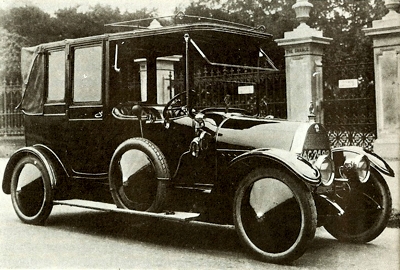 1914 Imperia 15.9 hp.
1914 Imperia 15.9 hp.
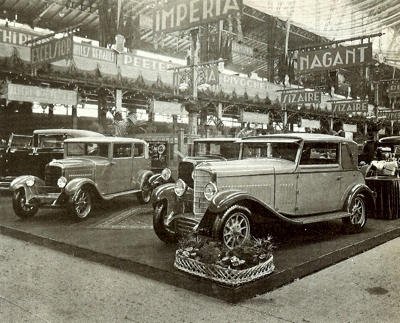 Imperia stand at the 1928 Brussels Motor Show. In the foreground is the Imperia two-door coupe which featured a six-cylinder 1800cc 40 bhp engine - and it had a top speed of around 75 miles per hour.
Imperia stand at the 1928 Brussels Motor Show. In the foreground is the Imperia two-door coupe which featured a six-cylinder 1800cc 40 bhp engine - and it had a top speed of around 75 miles per hour.
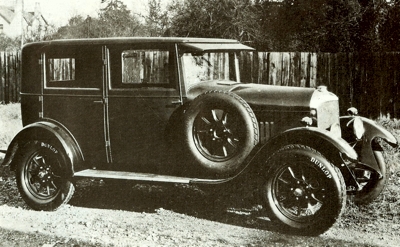 Imperia 11/24 hp model, which was fitted with an 1100cc four-cylinder engine and four-speed gearbox. The top speed was around 50 miles per hour - and it was the 11/24 which remains as arguably Impreia's most famous model.
Imperia 11/24 hp model, which was fitted with an 1100cc four-cylinder engine and four-speed gearbox. The top speed was around 50 miles per hour - and it was the 11/24 which remains as arguably Impreia's most famous model.
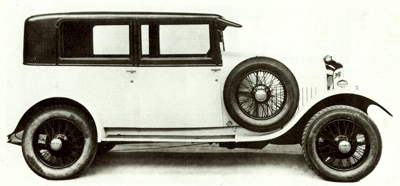 1927 Imperia 11/24 hp. The previous year, an 11/24 hp took out the Monte Carlo Rally.
1927 Imperia 11/24 hp. The previous year, an 11/24 hp took out the Monte Carlo Rally.
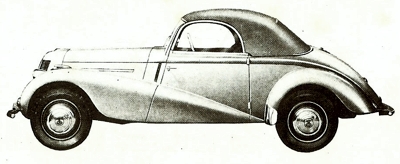 1948 Imperia TA8, which featured igravity feed hydraulic brakes, a three-speed gearbox with dashboard change and composite wood and metal coachwork.
1948 Imperia TA8, which featured igravity feed hydraulic brakes, a three-speed gearbox with dashboard change and composite wood and metal coachwork. |
The Baron de Tornaco
At the 1921 Brussels Show, Imperia announced a 5.6-liter straight-eight with an overhead camshaft and Perrot four-wheel braking. This, however, proved to be short-lived and was replaced after only three had been built by a new sporting Imperia-Abadal, with a 3-liter long-stroke engine of identical dimensions to the Bentley, in common with which it also had an overhead camshaft and four valves per cylinder.
Maximum speed was around 90 mph, and the Baron de Tornaco drove one of these cars to victory in the first Belgian Grand Prix at Spa, averaging 55 mph over the event's 375 miles. This car was also doomed to a shortlife, and did not see out 1923.
Replacing it was Imperia's most famous model, the slide-valve four-cylinder designed by the 'eminent engineer' Couchard, who was the technical head of the company. The slide valve was an attempt to replace the poppet valve with a more positive and silent means of allowing the combustion gases to enter and leave the cylinder.
Couchard's system had neither simplicity of production nor ease of maintenance on its side as, unlike the sleeve valve, which completely encircled the piston, the slide valves moved up and down in slits in the cylinder walls, into which they were dovetailed like the lid of a pencil box.
'It will be impossible,' claimed Couchard's critics, 'to maintain sufficient gas-tightness between cylinder and slide. Nor can you mass-produce such an engine'. However, Couchard was equal to the challenge. The cylinder blocks, having been rough-bored, were placed on a special Lapointe machine which cut the dovetailed grooves in their walls.
Then the slide valves, cut out four at a time, were machined and fitted in their grooves; a special hone gave cylinders and valves their final surface finish. The camshaft, machined from a solid billet of forged steel, moved the valves up and down desmodrornically.
The engine should have been an exceptionally silent power unit, but it was not. But it did offer reasonable performance for a four-speed 1100 cc car (the original slide-valve model had only 1000 cc, soon enlarged for extra power). Top speed, carrying a four-seater fabric saloon body, was 50 mph. The bodywork was also one of the first to be fitted with a sliding sunshine roof - not a perfect device considering many road testers claimed it leaked badly.
Cooking the Ferodo
The catalogue of the 11/24 Imperia's unorthodoxies did not end there: apart from the fact that the engine revolved anticlockwise, it was also fitted with a braking system which incorporated an early form of 'feedback'.
The front-wheel brakes and transmission brake were interconnected in such a way that the transmission drum acted as a servo for the front brakes, so that the harder you put your foot on the brake, the greater was the inclination for the car to fold in the middle. From 40 mph, the car could stop in 95 feet and a cloud of fried Ferodo.
Van Roggen takes the light-car award in the 1926 Monte Carlo Rally
Surprisingly, the little Imperia had quite a sporting record: it took the first three places in its class in the 1925 Spa 24-Hour Grand Prix and, driven by Van Roggen, took the light-car award in the 1926 Monte Carlo Rally. There were even plans to produce the Imperia in Britain, at the Cordwalles Works, Maidenhead, home of the GWK (Van Roggen and Grice of GWK had been business associates before the War); although a few cars were assembled, circa 1926, the project came to nothing.
Also in 1925 Imperia hired Louis de Monge as chief research engineer. Some of his work included torsion bar suspension and automatic transmissions. De Monge left in 1937 to join Ettore Bugatti for whom he would design the Bugatti 100P racer plane
The Imperia Supersport
On the home market, however, Imperia, whose sales in 1927 were only 504, was gobbling up the ailing Belgian motor industry with avidity. Imperia production was now said to be running at 2500 a year, and a six-cylinder variant of 1624 cc had been introduced in 1927.
At the end of 1930, a Supersport variant of the six appeared. This had an engine 'nettement plus pouse' with triple carburetors, and was said to be capable of over 80 mph with 'suitably profiled coachwork', as the makers put it. The day of the slide valve was, however, virtually over.
In 1934, the Nessonvaux management signed an agreement with Adler of Frankfurt, and the subsequent Imperias were no more than Belgian-bodied Adler-Trumpf and Trumpf-Junior front-wheel-drive chassis.
A merger with Minerva in 1936 did neither marque much good, although the Imperia survived until 1948, its last fling being a curious amalgam of the Adler-Trumpf and the stillborn 1340 cc Hotchkiss-Amilcar designed in 1940. After that, all was anticlimax, for the Imperia badge was finally stuck on the front of Standard Vanguards assembled in Belgium at Nessonvaux. After 1948 Impéria assembled Adlers and Standard Vanguards under license. After Standard decided to set up a new factory in Belgium, the factory was left without work and had to close doors in 1957.
